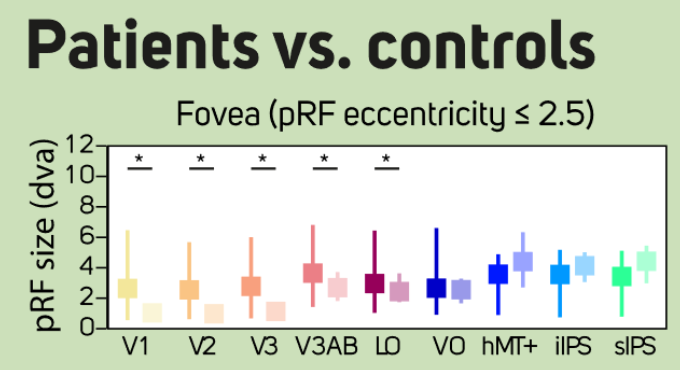Abstract
Amblyopia is a common cortical developmental disorder affecting 3.7% to 5% of the adult population. It is defined as a monocular visual acuity impairment despite healthy or corrected-to-normal optical components. Deficits associated with amblyopia include reduced contrast sensitivity, impaired foveal localization, and stereoblindness. While traditionally viewed as a developmental cortical pathology given the preserved ocular function, the neural bases of amblyopia remain debated. This study aims at understanding the neural mechanisms underlying amblyopia by modeling fMRI data collected during retinotopic mapping in strabismic, anisometropic, and mixed amblyopia patients. Population receptive field (pRF) parameters were extracted across early and intermediate visual areas and compared between amblyopic patients and controls. We found that amblyopic patients systematically exhibited larger pRF sizes across all visual areas examined, with greater effect sizes from V1 to V3 and in LO/VO. Effect sizes were stronger in foveal stimulation than in the periphery, a result compatible with disordered cortical projection theories of amblyopia. Anisometropic and mixed amblyopia patients showed larger pRF sizes than strabismic patients, unexpectedly given their clinical symptoms. These results advance our understanding of amblyopia’s neural underpinnings. Foveal-peripheral differences point to abnormal cortical projections. Moreover, the increased pRF sizes, mismatching clinically-predicted patterns, suggests a more widespread plastic dysfunction. Overall, our findings point to a substantial receptive field reorganization in amblyopia, mostly in the early visual system.
Conference Name

